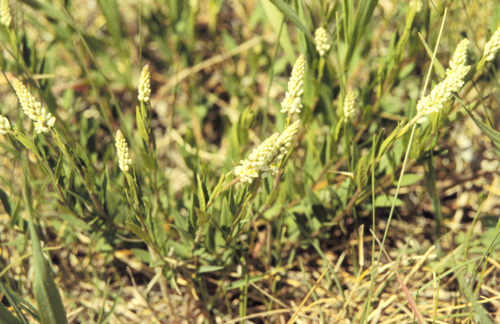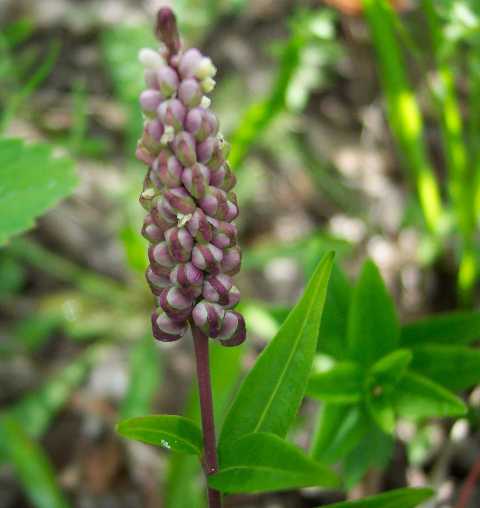Senega Snakeroot
 |
 |
Description
Senega snakeroot (Polygala senega L., Polygalaceae) is a perennial herb with many unbranched stems growing to about 30 cm, from one base. The leaves are small, lance-shaped, and the flowers are greenish-white, in terminal spike-like inflorescences. The roots are yellowish or greyish-brown and have a twisted snake-like appearance. The crown bears traces of old stems, and the root smells and tastes somewhat like wintergreen. The root is the part of the plant that is commercially important.
History And Use
Senega snakeroot has traditionally been used as a cure for snakebite by the North American First Nations people. It was used for earaches, toothaches, sore throats, croup and colds. Its main use today is as an expectorant in cough syrups, teas and lozenges, and as a gargle for sore throats. It has also been used in larger doses as an emetic and cathartic.
Area Of Adaptation
Senega snakeroot is found in the wild in open woods, along roadsides, and in prairie areas. It is often found in disturbed areas. It prefers good soil with rotted manure or leaf litter and a neutral to slightly alkaline pH, and full sun or partial shade. Its natural distribution is from southern Alberta across the southern half of the prairie provinces and eastward into New Brunswick, southward into South Dakota, Arkansas, Tennessee, and Georgia. In Manitoba the largest populations are in the Interlake area of MB, but it is also found quite commonly throughout the southern part of the province.
Cultivation And Processing
Senega snakeroot takes 4 years to produce a marketable root. The seed requires cold stratification for 60 days before planting, and shows a 60 - 80 percent germination rate. Young shoot cuttings can also be propagated. Harvesting is usually done in the late summer or early fall. The roots are dug, washed and dried in the sun or with low heat. The roots lose two-thirds of their weight with drying, and it may take 160 roots to yield one kg of dried material.
Marketing
Wild populations of senega snakeroot in Manitoba and Saskatchewan are currently the major sources of supply for the North American market, and a large tonnage is also being exported to Europe. Demand is estimated to have an annual growth rate of 5 percent. Because of over-harvesting in the past years, there is a great need to cultivate the root. In 1995, the root sold for US$6.50 - $8.00/lb, with most of the ten tons of wild harvested root product going to Japan, Europe and the US. In Canada several Health Canada-registered "Herb and Natural Product" and homeopathic products are available. It is also officially recognized as a medicinal herb in the UK (General Sales List) and Germany (Commission E).
